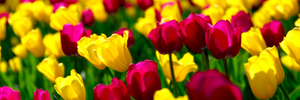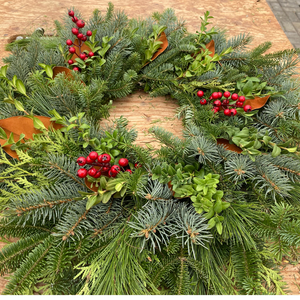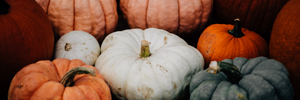News
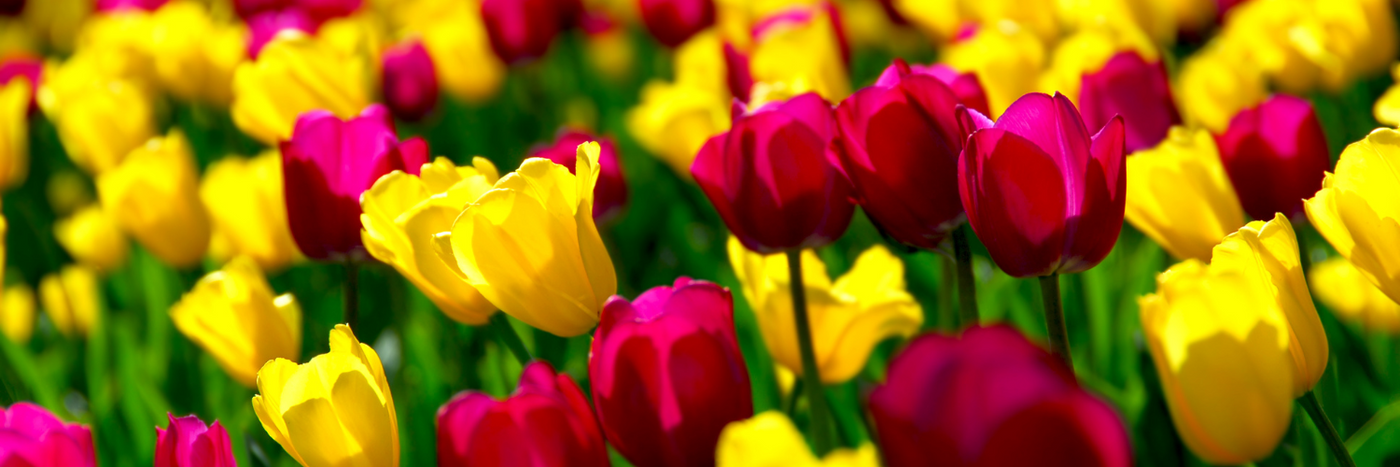
Plant Fall bulbs now for spring colour!
Fall is the time to think ahead to next spring if you want colourful Daffodils, Tulips, Crocuses and more to enjoy once the snow has left.
Hardy fall bulbs such as daffodil, tulip, hyacinth, crocus and snowdrop are spring flowering plants that must be planted in the fall. They are mostly native to mountainous areas of Europe and the near east — Spain, Turkey and Afghanistan. They actually need the dormant rest period of a long, cold winter. The melting snow and ice in early spring provide needed moisture as they start to grow and flower. Plant from September to December, even after the first frost if the ground can still be worked.
Planting
Bulbs can also be planted in individual holes. Dig a hole and sprinkle a tablespoon of a bulb fertilizer or bone meal in the bottom of the hole. Place the bulb in the hole with the pointed end up.
Cover the bulb with soil and water thoroughly. A 5 cm layer of mulch on top of the bed will help prevent winter weeds, retain moisture and insulate against severe winter cold and temperature fluctuations.
Preparing a bed for fall planted bulbs
Prepare the bed - double digging will help to make a well-drained planting bed.
Condition the soil - Improve soil by adding Sea Compost, composted manure or a 3-in-1 soil mix. Then work into a depth of 30 cm. Add 1 kg bonemeal for every 92.9 m2 (1000 sq.ft.)
Plant — the sooner the better
Point bulb upward. Add sprinkle of blood meal or Hen Manure to deter squirrels from stealing bulbs.
Add 2-5 cm of mulch.
After spring flowering the foliage must be allowed to remain to soak up sunshine and replenish the stored energy in the underground bulb. Only the flowering stems should be removed. In a few weeks, the foliage withers and dies down. This is the plant's natural defense against the too hot summer sun in its original habitat.
Replanting your flower bed with summer annuals gives you the opportunity to use more bone meal which, with its high phosphorous content, is beneficial to both the new planting and the bulbs.
- Kristin Ego
- Tags: bulbs fall tulips daffodils

Celebrating 50 years by donating 50 trees to our community
In celebration of our 50th anniversary, Ego’s Nurseries is proud to announce the donation of 50 trees to local public spaces across Oro-Medonte and surrounding communities. This initiative is part of Ego’s commitment to giving back to the community that has supported the business for five decades and aims to help restore parks, schools, and public spaces impacted by the recent devastating ice storm.
The tree donation program, launched this spring, will provide a mix of native and other resilient species chosen specifically to thrive in our local climate and support long-term environmental health. Planting will begin this spring, with trees distributed among municipal parks, schools, and community spaces.
“For 50 years, Ego’s Nurseries has been deeply rooted in this community,” said Kristin Ego MacPhail, co-owner of Ego’s Nurseries. “After the challenges brought on by the recent ice storm, we knew that celebrating our anniversary meant more than just looking back, it meant investing in the future. Trees symbolize resilience, hope, and new beginnings, and we are honoured to help replant and rejuvenate the spaces our community loves.”
For more information about the tree donation program or upcoming planting events, please visit www.egosgardencentre.com or contact Ego’s Nurseries at (705) 326-9922.
To apply for trees in your community, please fill out this form:
2025 Tree Planting Donation Request (Google Form)
or download PDF Application and return to Info@egosgardencentre.com

- Kristin Ego

Garden Design with Mocha Mousse - 2025 Colour of the Year
Pantone has unveiled its Color of the Year for 2025: PANTONE 17-1230 Mocha Mousse, a warm, rich brown that evokes the comforting essence of chocolate and coffee. This earthy hue reflects a collective desire for comfort and a deeper connection to nature, making it an ideal inspiration for garden design.
While there are limited number of plants that showcase this specific colour of the year in their flowers and foliage, we do have a few suggestions that are complimentary. Pantone has created a "Floral Pathways" colour palette that suggests many of our favourite plants even in the names of the colours... Tendril, Cornflower Blue, Viola, Rose Tan, Willow and Gardenia that pair well with Mocha Mousse.

Design Themes to Enhance Mocha Mousse:
Use natural materials and incorporate elements like trellises, stone pathways, pine bark mulch, pots and containers to echo the earthy quality of Mocha Mousse.
Consider these colour combinations to compliment Mocha Mousse elements:
Mocha Mousse with Soft Blues and Lilacs: Pairing brown with cool tones like cornflower blue or lilac creates a calming and understated palette...
- Angelonia, Evolulus 'Blue My Mind', and Verbena in containers.
- Blue to purple shades of Lilacs are classic
- Perennials such as Brunnera, Mertensia and blue Aquilegia in gardens
Mocha Mousse with Dusty Rose: Incorporate plants with dusty rose flowers, such as varieties of roses, to add a touch of warmth and romance.
- Fragrant English roses and Hellebores in gardens
- Begonia 'Solenia Dusty Rosę' in pots and hanging baskets
- Succulents and tropical plants with a rosy hue look amazing in a pot or container in this colour palette!
Mocha Mousse with Willow Green accents: Introducing a mix of fresh and romantic, antique green through garden accessories or select plantings can provide fresh but nostalgic contrast to the warm brown tones.

By thoughtfully integrating Mocha Mousse into your garden with plants, design elements, and utilizing complementary colour schemes, you can create a harmonious and inviting space that reflects the comforting and natural essence of this year’s Pantone Color of the Year
- Kristin Ego
Winter Planter Arrangements
Choose from our fresh selection of outdoor planters and inserts or let us create custom ones just for you!
Sample photos...

- Kristin Ego
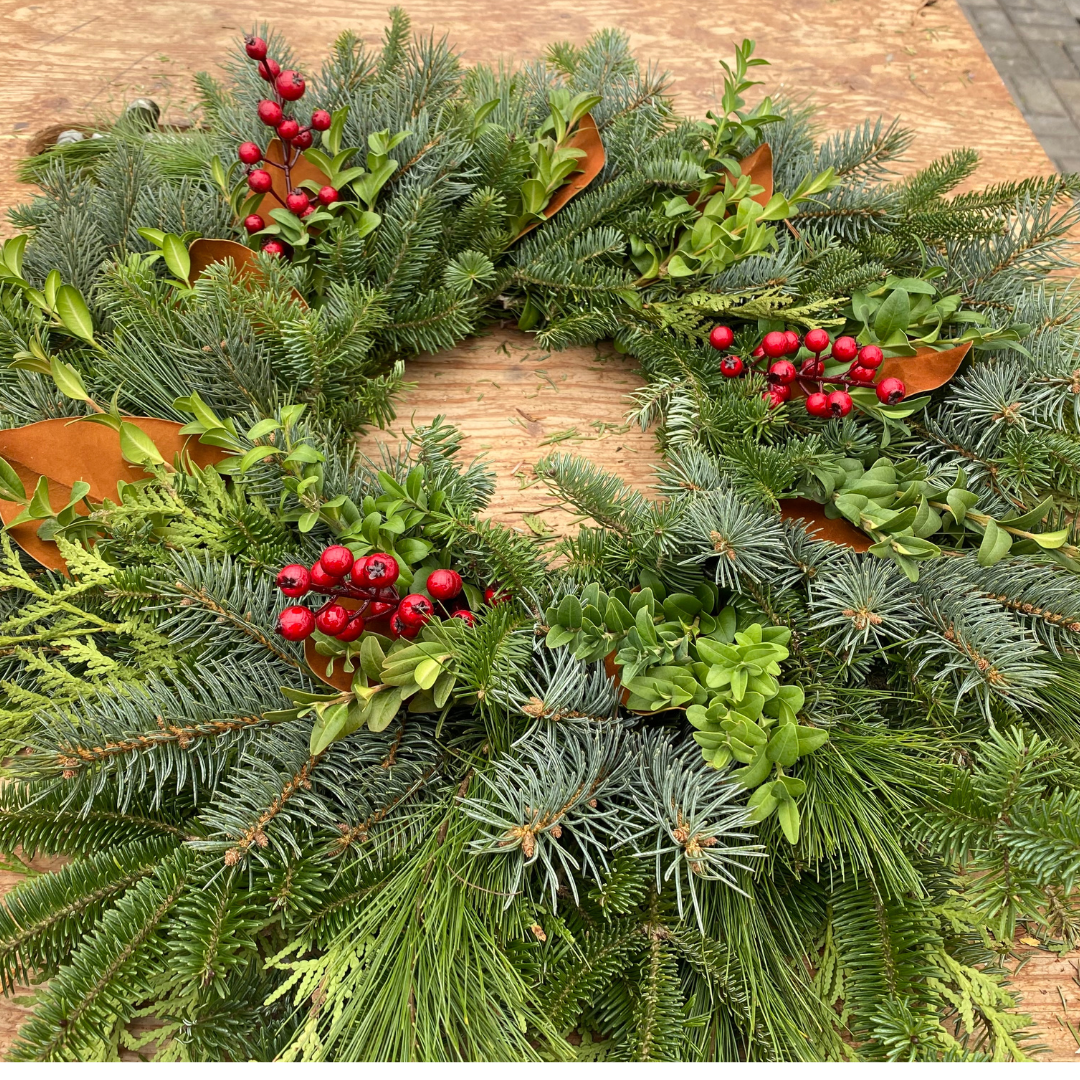
Fresh Custom Wreaths
Looking for something a little special for your door this winter season? Did you know we make custom wreaths in a variety of sizes to suit many homes and businesses? We also keep a selection of ready-to-go wreaths on hand everyday!
Let us know your colour preferences and size and we can create a custom wreath for you! Sample photos of wreaths below...

- Kristin Ego
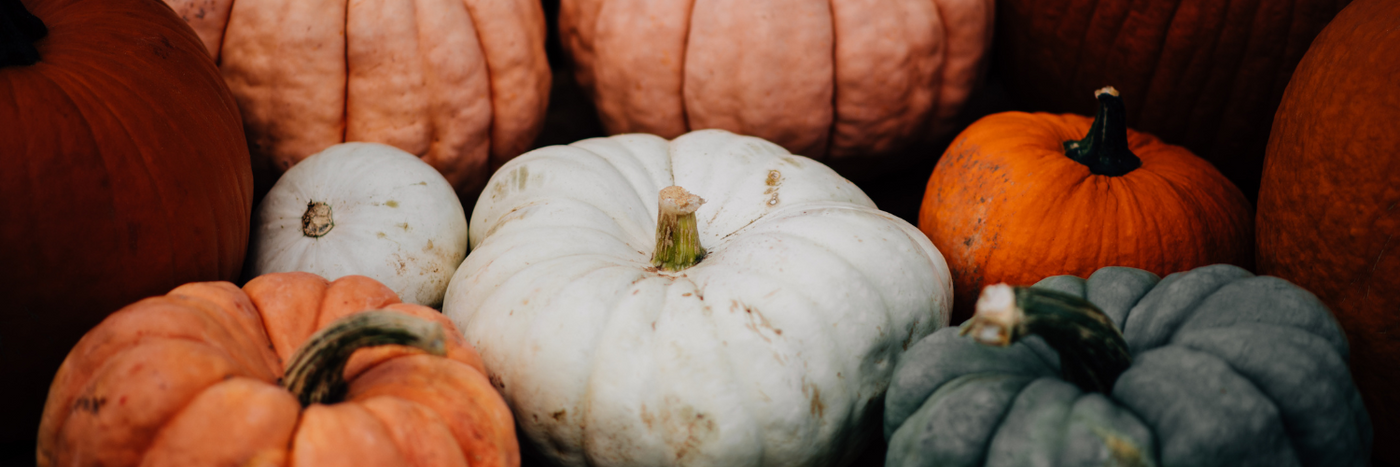
Pumpkins
For many, pumpkins are associated with autumn, sweet desserts, and holiday festivities.
Pumpkins and other crops in the Cucurbitaceae family originated in Central America, where Native Americans would either roast and consume strips of pumpkin flesh, or dry the skins and weave them into mats. When European colonists arrived in the Americas, they prepared a dish believed to be a precursor of modern pumpkin pie. They cut the top off the pumpkin, removed the seeds, and filled the inside with milk, spices, and honey before baking it over hot ashes.
The popular tradition of pumpkin carving was derived from an Irish custom of carving jack-o’-lanterns out of turnips and potatoes, and placing an ember inside to ward off evil spirits. When Irish immigrants arrived in America in the 1800s, they brought this custom with them and applied it to pumpkins.
Today, pumpkins are a staple for fall decorations and recipes. Eating pumpkin provides numerous health benefits: they are high in fiber, potassium, iron, and vitamins A, B and C while being low in calories, fat, and sodium. Pumpkin is excellent in baked goods, soups, casseroles, pasta, and sauces. Cook with pumpkin throughout the year to support heart health and healthy blood pressure.
What is a Pumpkin?
As a member of the Cucurbitaceae family, pumpkins are related to squash, cucumbers, and melons. Most varieties that we classify as pumpkins belong to the species Cucurbita pepo, which also includes varieties of winter squash, summer squash, zucchini, and gourds. These pumpkins are characterized by round fruit with a thick shell that has smooth, slightly ribbed skin and a deep yellow to orange color.
Some winter squash varieties from the species Cucurbita maxima (Jarrahdale, Turk’s Turban, and all giant pumpkins) and Cucurbita moschata (Long Island Cheese, Rouge Vif D’Etampes) are sometimes also considered pumpkins due to their similar appearance.
The diversity among varieties that are classified as pumpkins is incredible! With sizes ranging from 4 ounces to over 1,000 pounds, various unique shapes, and brilliant colors like orange, yellow, white, green, blue, gray, pink, and tan, there are endless opportunities to select the perfect pumpkin.
Choosing the Perfect Pumpkin
When selecting a pumpkin for cooking, it is best to choose a “pie pumpkin” which has dense, sweet flesh. The sugars and lower moisture of these types hold up best in cooking. It is also easy to grow pumpkins for harvesting edible seeds.
When selecting pumpkins for carving and fall decoration, choose varieties that suit your style! Traditional carving pumpkins are medium to large in size, deep orange, and lightly ribbed with a strong handle.
Add additional interest to fall décor using miniature pumpkins with unique colors and patterns. Miniature pumpkins are typically less than 2 pounds and can be found in a variety of shapes and colors.
How to Grow Pumpkins
To have mature pumpkins for use in autumn, plant seeds between late May and mid-June after all risk of frost has passed. Seeds can be direct sown or started indoors and should be planted at a depth of 1” into well-drained soil that has warmed to 70°F. To ensure fruit set and yields, allow sufficient space between each plant. Give small pumpkins a 12 ft2 area, large pumpkins a 24 ft2 area, and giant pumpkins a 36-48 ft2 area per plant.
Pumpkins perform best when they are fertilized throughout the growing season and fruit set will be strongest if the flowers are pollinated by bees. If pumpkin flowers are not pollinated completely, the fruit will start growing but will abort before full development. To ensure a bountiful pumpkin harvest, encourage bees in your garden or pollinate the flowers by hand.
When the pumpkins have matured, the stem holding the fruit will begin to dry. Harvest the pumpkin by carefully cutting the vine on each side of the fruit stem, leaving a nub at the point where the stem meets the vine. This will encourage the stem to maintain strength as it dries down and will minimize infection by microbes that can cause decay.
To keep longer-lasting pumpkins, wash the fruits in a diluted bleach solution, allow them to dry, and place them in a cool shady spot after harvest. Then they’ll be ready to carve, decorate, or use in the kitchen.
As pumpkins grow in the garden it is incredible to observe the changes throughout the season, and rewarding to finish with a harvest of beautiful, versatile fruits. The uses of pumpkins in the garden and kitchen are limitless, so let your creativity bloom!
The information in the article has been provided as an educational service of the National Garden Bureau.
- Kristin Ego
